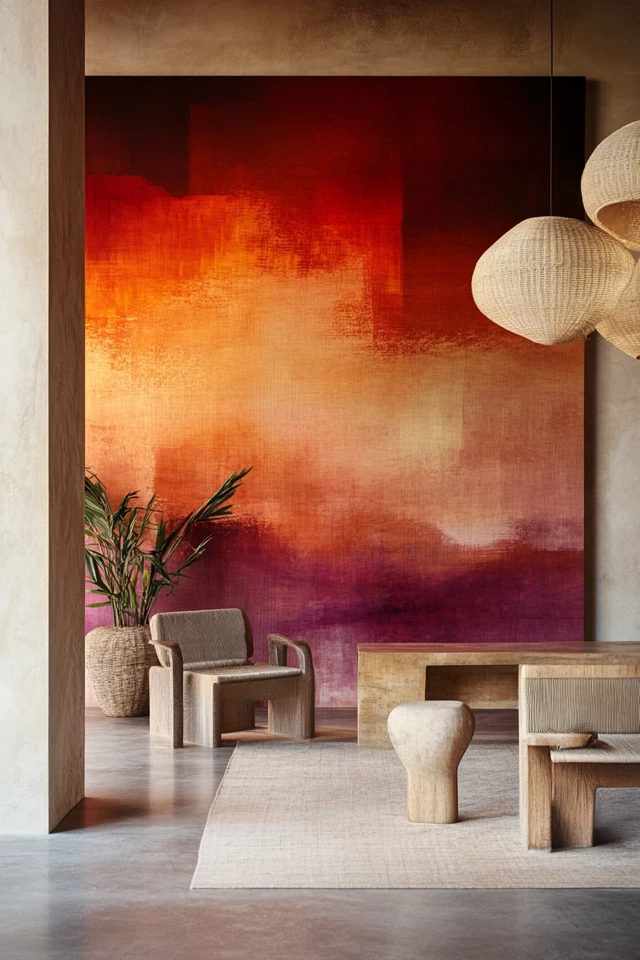Introduction
Designing a room that feels dynamic yet harmonious can be a challenge. Often, we rely on color to set the mood, but a single shade across a room can feel flat, while too many colors can overwhelm the space. Enter tonal gradients—a subtle yet impactful design strategy that uses variations of a single color to create depth, dimension, and visual interest. By layering lighter and darker tones of one hue, you can add complexity to your design while maintaining a cohesive and serene aesthetic.
I first encountered the power of tonal gradients when working on a living room redesign for a client who loved the calming effects of blue but wanted to avoid a monotonous look. By layering a gradient of soft sky blue, muted teal, and deep navy across the walls, furniture, and decor, the room came alive. The effect was both soothing and sophisticated, with each shade contributing to the room’s depth. The client described it as stepping into a “calming ocean of color,” and it quickly became their favorite space in the house.
In this guide, we’ll explore how to incorporate tonal gradients into your room designs, from choosing the right palette to layering textures and finishes. Whether you’re decorating a bedroom, living room, or even a bathroom, tonal gradients offer a stunning way to elevate your space.
The Perfect Design for You
Tonal gradients are perfect for anyone who:
- Wants to create a dynamic room without overwhelming it with contrasting colors.
- Appreciates minimalist or monochromatic designs but craves more depth.
- Enjoys experimenting with subtle transitions and layered tones.
- Loves the calming, harmonious feel of a cohesive color scheme.
Imagine a bedroom where the walls transition from a soft lavender at the ceiling to a rich plum at the floor, or a bathroom with gradient tiles that fade from pale aqua to deep turquoise. These spaces feel intentional, elegant, and full of character—all while maintaining a sense of balance and tranquility.
No matter your style or color preferences, tonal gradients can be adapted to suit modern, traditional, or eclectic designs, offering endless opportunities for creativity.
Picture Gallery
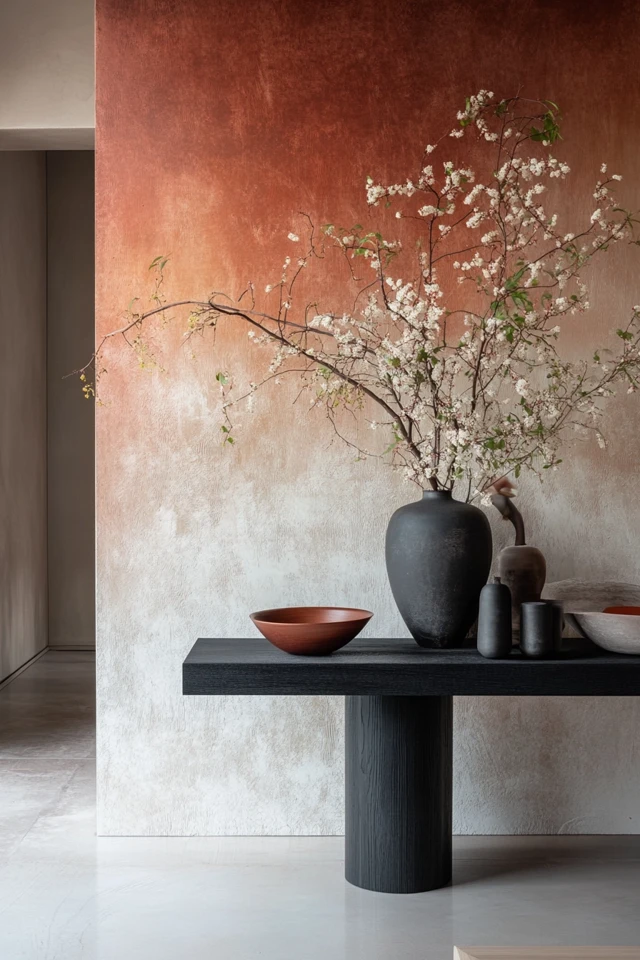
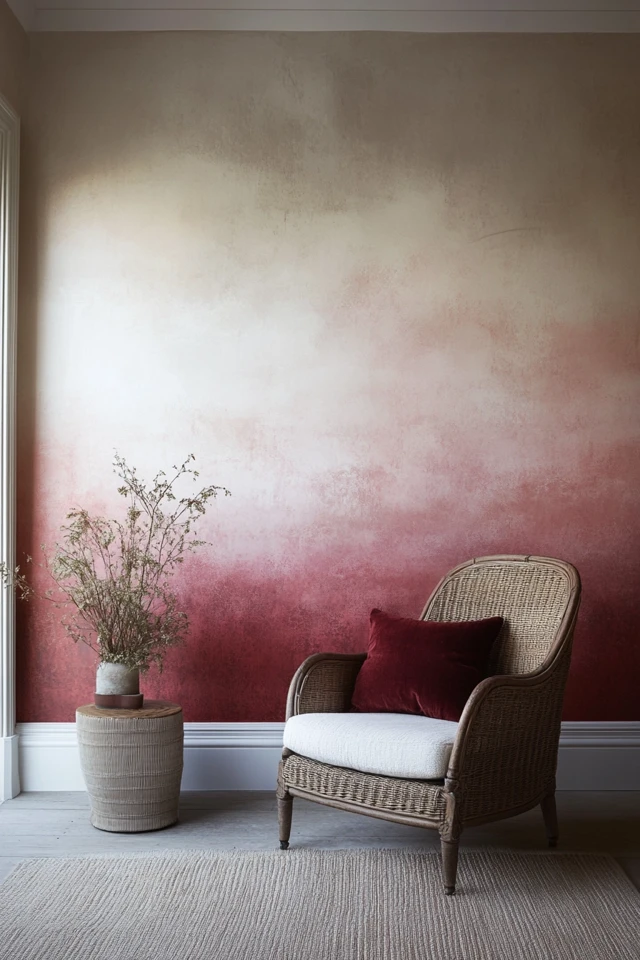
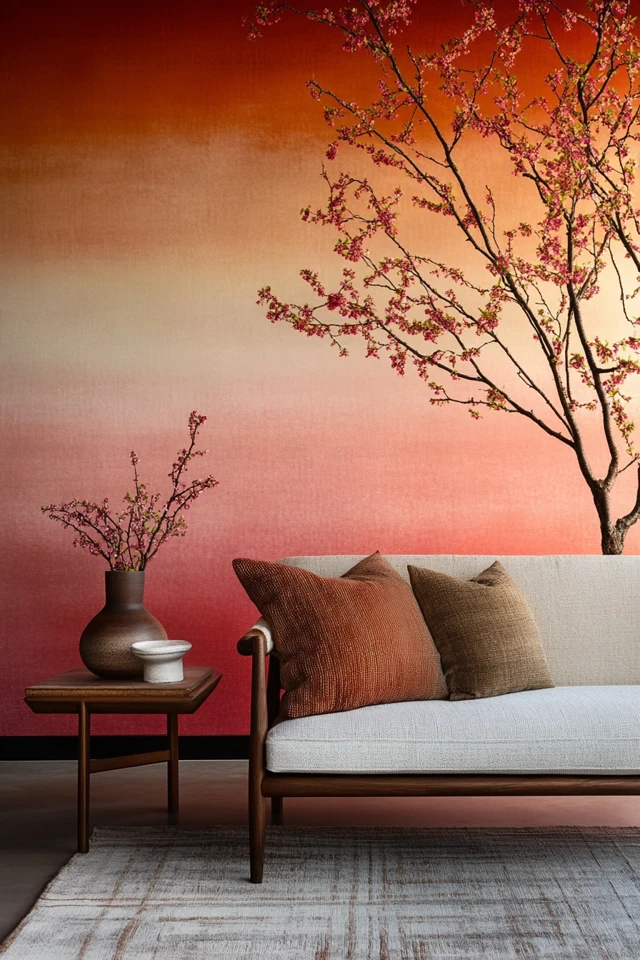
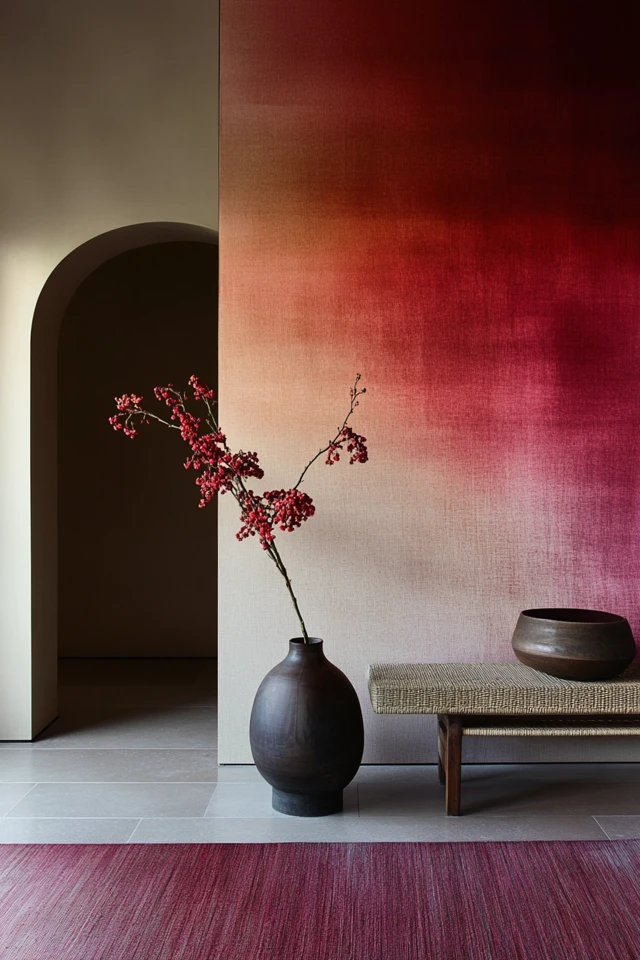
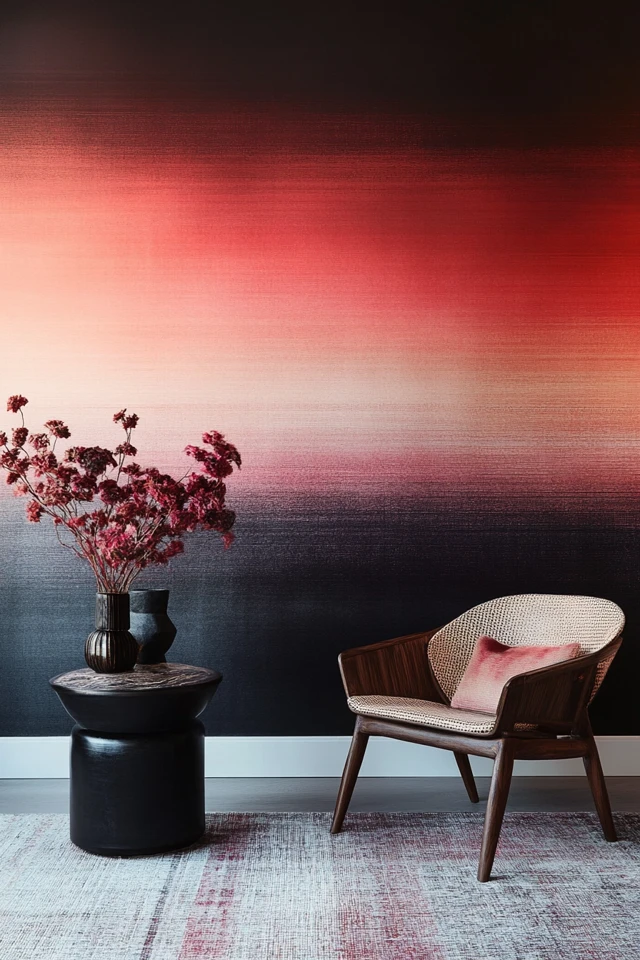
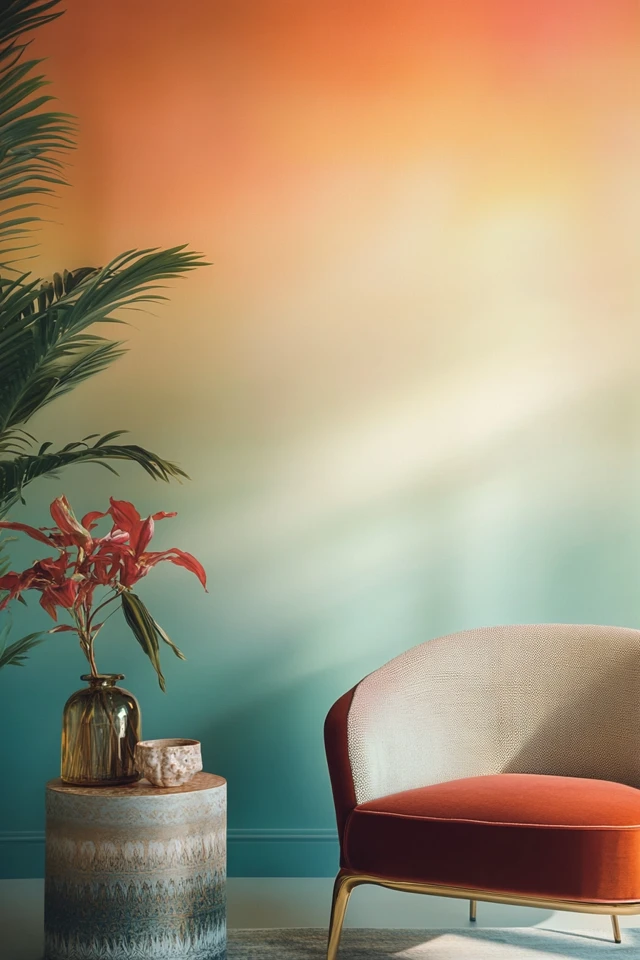
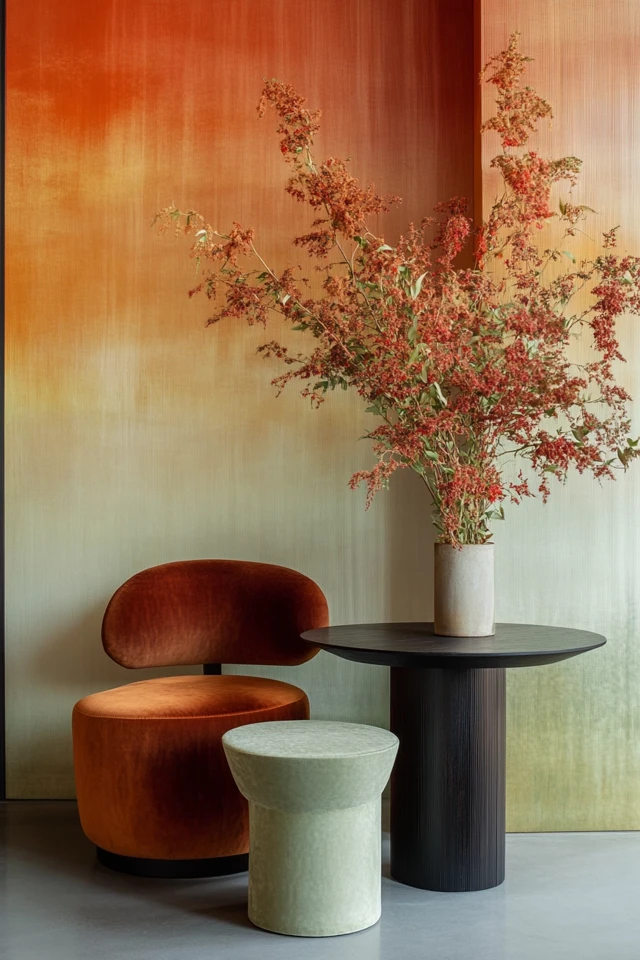
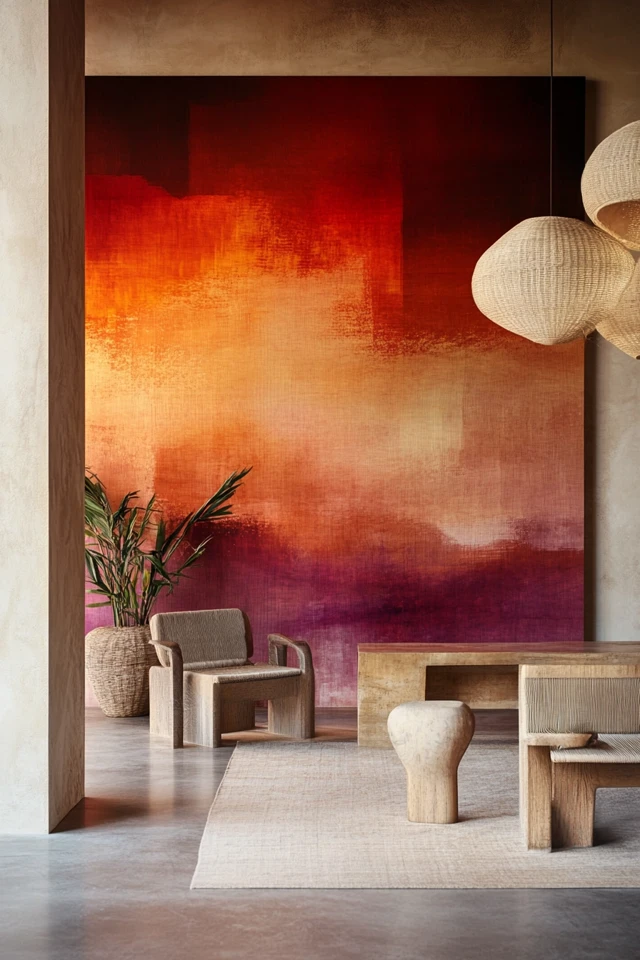
Why Tonal Gradients Work
Tonal gradients create depth and movement within a room, making spaces feel more layered and visually engaging. Here’s why they’re such a powerful design tool:
- Adds Dimension: Gradients create the illusion of depth, making rooms feel larger, more dynamic, and less two-dimensional.
- Energizes Monochromatic Designs: By layering tones of the same color, you can maintain a cohesive palette without the monotony of a single flat shade.
- Enhances Mood: Gradients evoke a natural sense of flow and calm, similar to how we experience the subtle shifts in light and color during a sunrise or sunset.
- Encourages Harmony: Using one color family across a room ensures that every element feels connected and intentional.
- Allows Creativity: Gradients can be as bold or subtle as you like, offering endless ways to express your style.
Designers often compare tonal gradients to a symphony, where each shade plays a distinct role but comes together to create a harmonious whole. This approach not only enhances the visual appeal of a space but also evokes a sense of movement and balance.
How to Incorporate Tonal Gradients: Step-by-Step
1. Choose Your Color Family
- Start by selecting a color family that aligns with the mood you want to create:
- Blues and Greens: Ideal for calm, relaxing spaces like bedrooms and bathrooms.
- Warm Neutrals: Perfect for cozy, inviting areas like living rooms or dining rooms.
- Bold Shades: Deep reds, oranges, or jewel tones work well in dramatic or formal spaces.
- Pick a primary shade and then identify lighter and darker tones within the same family. Tools like paint swatches or digital design apps can help you visualize your gradient.
- Example: For a tranquil living room, start with a soft sage green and layer it with moss and forest green for a natural, grounded feel.
2. Decide on the Application
- Tonal gradients can be applied in various ways depending on your vision:
- Walls: Use gradient paint techniques or wallpapers to create a stunning focal point.
- Furniture: Layer upholstered pieces in different shades of the same color family.
- Decor: Incorporate cushions, rugs, curtains, and accessories that follow a gradient pattern.
- Consider where the gradient will have the most impact and build the design around that element.
- Example: In a bedroom, paint the wall behind the bed with a gradient that fades from a pale blush at the top to a deep terracotta at the bottom for a dreamy effect.
3. Start With the Walls
- Walls are often the largest canvas in a room, making them the perfect starting point for a gradient design:
- Paint Gradients: Use a color-blocking technique to transition between shades or blend them for a seamless ombre effect.
- Wallpaper Gradients: Choose wallpapers with pre-designed gradients for a polished look.
- Tile Gradients: In bathrooms or kitchens, gradient tiles can create a stunning backsplash or shower surround.
- Example: A dining room with a gradient wall that shifts from cream at the ceiling to warm taupe at the base creates a cozy, grounded ambiance.
4. Layer Furniture and Textiles
- Use tonal gradients to bring depth to your furnishings and textiles:
- Select furniture in shades that complement the gradient on your walls.
- Incorporate rugs, curtains, and cushions that showcase lighter or darker tones within the palette.
- Layer textures like velvet, linen, or wool to enhance the richness of the gradient.
- Example: A sofa in a dusty rose pairs beautifully with pillows in blush and deep burgundy, echoing the gradient design of the room.
5. Play With Accessories
- Accessories are an easy way to introduce tonal gradients without committing to permanent changes:
- Use vases, lamps, or artwork that feature gradient patterns.
- Arrange books, ceramics, or decor items in tonal order on shelves.
- Add throws or blankets with subtle ombre effects for a cozy touch.
- Example: A minimalist shelving unit styled with gradient-colored books and ceramic vases adds depth to a neutral living room.
6. Incorporate Lighting
- Lighting can enhance and emphasize tonal gradients:
- Use warm or cool lighting to bring out the undertones in your color palette.
- Install LED strip lights to create a soft gradient glow on walls or furniture.
- Lighting can also act as a gradient itself, transitioning from brighter areas to softer, dimmer zones.
- Example: Place wall sconces with gradient glass shades that emit light in transitioning tones for a striking, artistic effect.
7. Mix Textures and Finishes
- Gradients become even more dynamic when paired with varied textures and finishes:
- Use matte finishes for subtle tones and glossy or metallic finishes for bolder ones.
- Combine smooth and rough textures to add depth to the gradient effect.
- Example: In a bathroom, gradient tiles in matte finish paired with metallic fixtures create a luxurious, spa-like feel.
8. Create Zoning With Gradients
- Use gradients to define different areas in open-concept spaces:
- Gradually shift tones across walls, flooring, or furniture to distinguish zones.
- Incorporate rugs or accent walls that reinforce these transitions.
- Example: In a studio apartment, use a gradient rug that transitions from pale gray to charcoal to visually separate the living area from the sleeping zone.
FAQ
1. Can I use gradients in small spaces?
Yes! Gradients can make small spaces feel larger by creating the illusion of depth. Use lighter tones at the top of walls and darker ones at the base to draw the eye upward.
2. How do I blend colors for a seamless gradient effect?
If painting, use a dry brush or sponge to blend colors where they meet. Alternatively, hire a professional or use pre-made gradient wallpapers for a flawless finish.
3. Can I use multiple gradients in one room?
Absolutely! For example, you can pair a wall gradient with gradient textiles or accessories, as long as they share a cohesive color family.
4. What’s the easiest way to try out tonal gradients?
Start with decor items like cushions, throws, or vases in gradient patterns to test the look before committing to larger changes.
5. Can tonal gradients work with bold colors?
Yes! Gradients work beautifully with bold tones like deep reds, emerald greens, or cobalt blues, as long as the transitions are balanced.
Variations
- Neutral Gradients: Transition between cream, taupe, and mocha for a calming, sophisticated look.
- Bold and Dramatic: Use jewel tones like sapphire, amethyst, and emerald for a high-impact design.
- Coastal Vibes: Blend aqua, teal, and navy for a fresh, ocean-inspired palette.
- Warm and Cozy: Transition from peach to rust to terracotta for a room that feels inviting and grounded.
- Modern Monochrome: Use shades of gray from light silver to deep charcoal for a sleek, contemporary vibe.
How to Showcase It
- Living Rooms: Use gradient walls paired with layered furniture and accessories for a cozy yet dynamic feel.
- Bedrooms: Transition bedding, rugs, and curtains through shades of one color for a serene retreat.
- Bathrooms: Create a gradient tile feature in the shower or along the backsplash for a spa-like atmosphere.
- Kitchens: Use gradient cabinetry or tiles to add subtle depth to a modern, minimalist design.
- Offices: Incorporate gradient wall art or decor to energize and inspire the space.
Occasions to Feature It
- Everyday Serenity: Use gradients to create calming, harmonious spaces for daily living.
- Seasonal Refresh: Transition colors to reflect seasonal changes, like warm tones for fall or cool blues for summer.
- Entertaining Guests: Impress visitors with stunning gradient walls or decor that feel artistic and intentional.
- Creative Studios: Gradients inspire creativity and add a sense of movement to artistic or workspaces.
- Renovation Updates: Use tonal gradients to modernize a room without requiring a full overhaul.
Conclusion
Tonal gradients are a game-changer in room design, offering a sophisticated way to add depth, movement, and personality to your space. By layering shades of a single color family across walls, furniture, and decor, you can create an environment that feels both dynamic and harmonious.
Whether you’re embracing soft pastels, bold jewel tones, or earthy neutrals, tonal gradients allow you to explore color in a new and creative way. So experiment with this versatile design trend, and watch as your space transforms into a masterpiece of subtlety and dimension!

